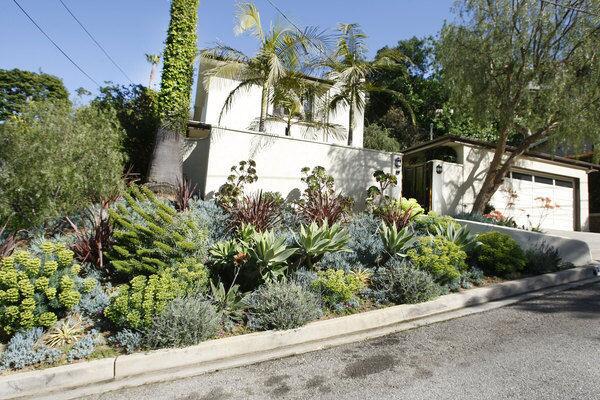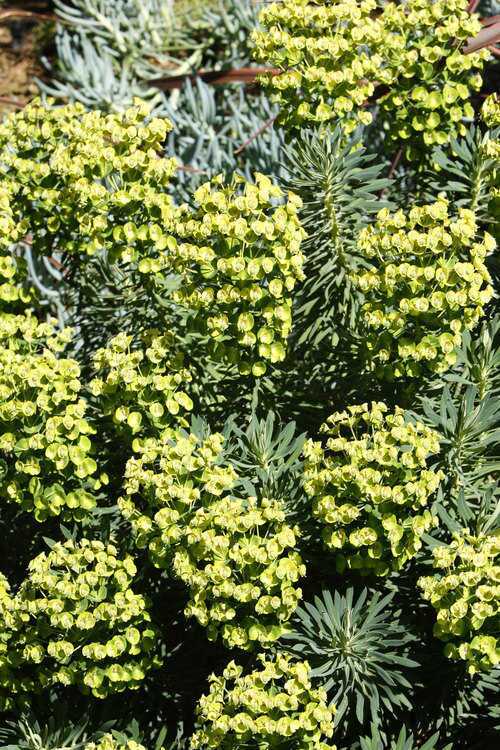
Euphorbia wulfenii is a bushy succulent that produces a profusion of tiny chartreuse flowers. (Kirk McKoy / Los Angeles Times)
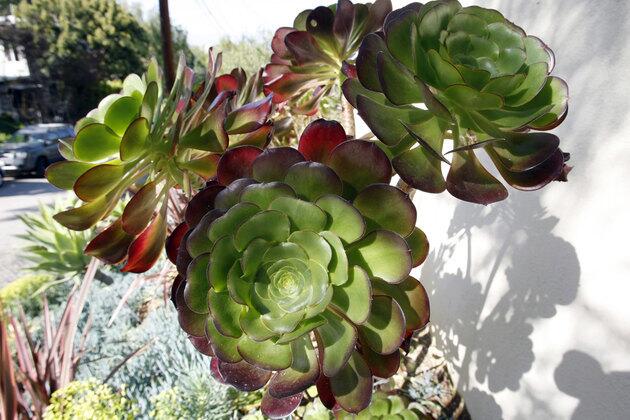
A type of aeonium named Cyclops, whose burgundy-tipped rosettes can reach 5 feet high, came from California Nursery Specialties’ Cactus Ranch in Reseda. (Kirk McKoy / Los Angeles Times)
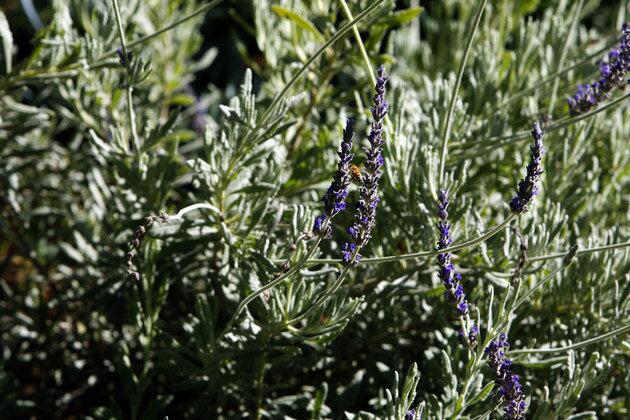
The lavender hybrid Goodwin Creek has slender scented flower spikes that add a touch of violet-blue to the palette. (Kirk McKoy / Los Angeles Times)
Advertisement
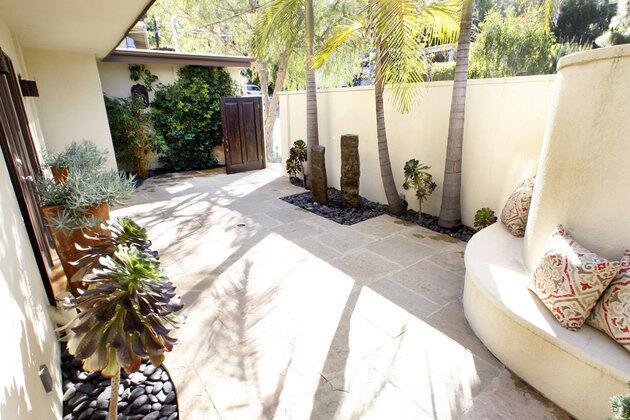
Grabel designed a child-friendly fountain as the focal point of the entry courtyard. Two natural basalt columns from Garden Temple in Studio City replaced a dated and potentially dangerous Mediterranean-style fountain with a deep catch basin at foot level. Knowing kids would be playing in the garden, the designer eliminated drowning and choking hazards by burying the new fountain’s basin safely beneath black river rocks that are too large to be swallowed. “Amy and David were starting a family and needed child-friendly space outside,” Grabel said. “The site had many issues with the slope, erosion control, drought from hot afternoon sun and aesthetics, but the goal was to make every space attractive and usable.” (Kirk McKoy / Los Angeles Times)
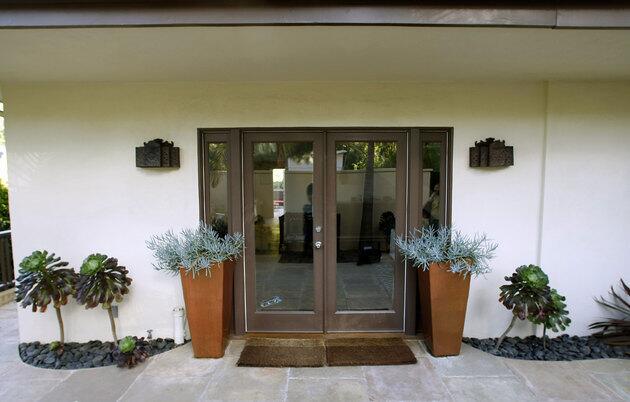
Grabel’s design strategy was based in color harmony and the repetition of plants for a sophisticated and consistent look throughout the garden. One of her first moves was to change the exterior paint scheme of the house. Garish yellow walls with green trim became quieter cream walls with brown trim, the better to complement the stone paving of the entry courtyard. The double front doors are flanked by gray-green senecio in tall planters and aeoniums in new planting beds. Grabel repeated the use of key plants to tie different parts of the garden together. (Kirk McKoy / Los Angeles Times)
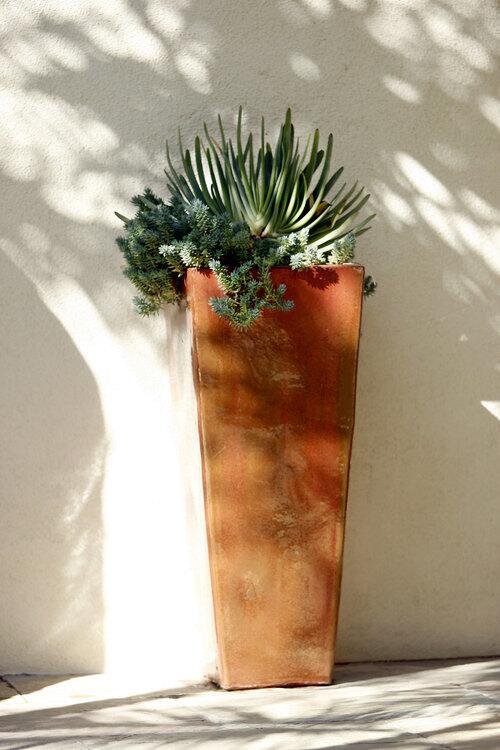
A glazed ceramic container from Vietnam augments the garden in the entry courtyard, where paving limits open ground available for plants. Here, Grabel paired the flat, upright leaves of a fan aloe with the trailing form of Cape Blanco, a type of Sedum spathulifolium. Tip: Containers that draw the eye upward break the monotony of planting everything at ground level. (Kirk McKoy / Los Angeles Times)
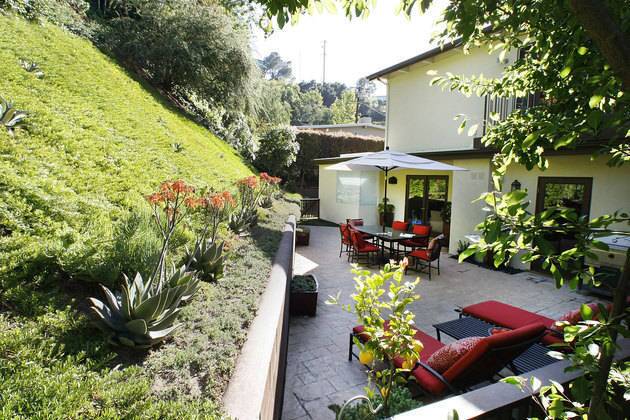
Because the backyard’s hillside is virtually too steep to walk, gardening on it is a tricky proposition. Grabel’s solution was installing landscaping that won’t require lots of watering, pruning, weeding or other maintenance. Although many people are drawn to seasonal color, by definition it comes and goes. Evergreen plants paired with bright cushions, planters or accessories can pack visual punch throughout the year. (Kirk McKoy / Los Angeles Times)
Advertisement
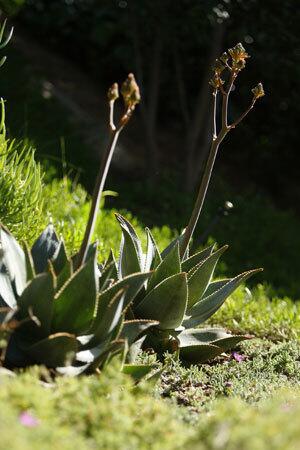
Grabel placed clusters of South African Aloe striata, or coral aloe, low on the rear slope so that the rosette-shaped succulents bloom at eye level on the dining patio. Tip: Installing plants near outdoor lighting allows you to enjoy them at night. (Kirk McKoy / Los Angeles Times)
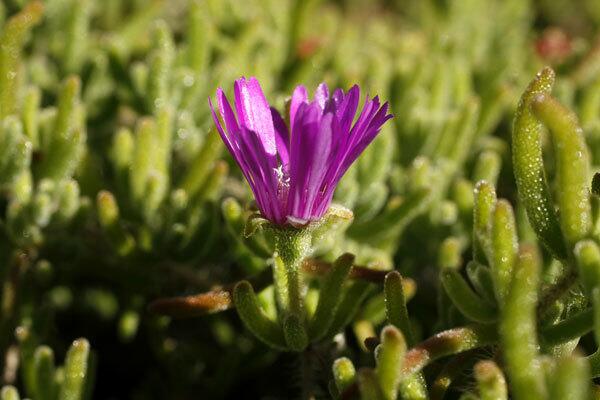
The ice plant Drosanthemum floribundum earned its place on the slope because it tolerates full sun, is drought tolerant and provides vivid purple blooms. Like little jewels, they cry out for up-close viewing. Because it grows shorter and lighter than other ice plants, it doesn’t carry as much weight and is less likely to drag soil downhill. (Kirk McKoy / Los Angeles Times)
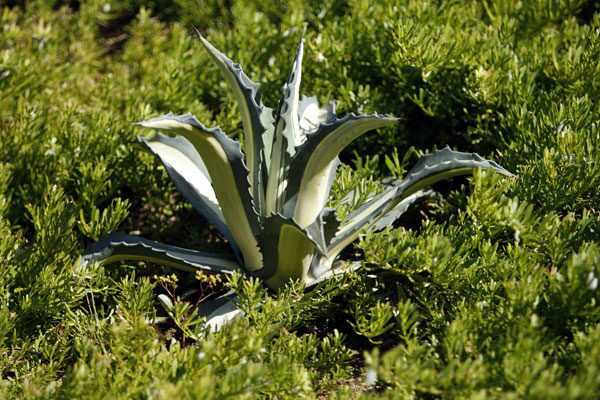
The broad variegated leaves of Mediopicta Alba, a type of Agave americana commonly called white-striped century plant, stand out against the evergreen groundcover Myoporum parvifolium. Grabel chose the sculptural succulent, which can grow 4 feet tall and 6 feet wide, for its dramatic form and ability to thrive in full sun with little water. (Kirk McKoy / Los Angeles Times)
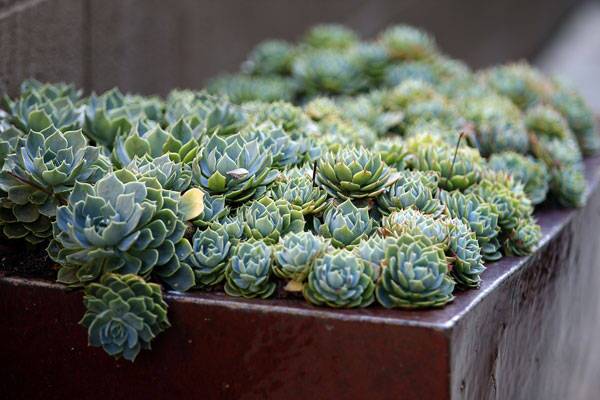
The echeverias known as Hen and Chicks fill glazed ceramic planters from China and serve as low-maintenance, water-wise accents. Plants in glazed containers won’t dry out as quickly as those in unglazed pots, which are porous.
More than a year since the garden was completed, the Messinger family enjoys spending time together indoors and out, proving that what seemed insurmountable drawbacks were design opportunities instead. “Before, it was really ugly outside. Now it’s a desirable space where the parents can entertain and the kids can play,” designer Grabel said. “It’s a contemporary place they’ll be able to grow with.”
The L.A. Times covers gardening all week long on our L.A. at Home blog. For the design stories behind dozens of California homes and gardens, bookmark our Homes of the Times virtual tours. Read the full story on this terraced slope. (Kirk McKoy / Los Angeles Times)
